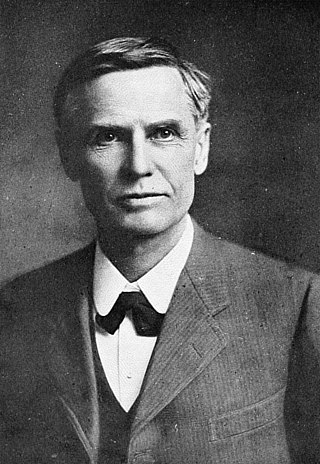
Direct democracy or pure democracy is a form of democracy in which the electorate decides on policy initiatives without elected representatives as proxies. This differs from the majority of currently established democracies, which are representative democracies. The theory and practice of direct democracy and participation as its common characteristic was the core of work of many theorists, philosophers, politicians, and social critics, among whom the most important are Jean Jacques Rousseau, John Stuart Mill, and G.D.H. Cole.

A popular initiative is a form of direct democracy by which a petition meeting certain hurdles can force a legal procedure on a proposition. The hurdles the petition has to meet vary between countries, typically signatures by a certain number of registered voters.

The secret ballot, also known as the Australian ballot, is a voting method in which a voter's identity in an election or a referendum is anonymous. This forestalls attempts to influence the voter by intimidation, blackmailing, and potential vote buying. This system is one means of achieving the goal of political privacy.

In California, a ballot proposition is a referendum or an initiative measure that is submitted to the electorate for a direct decision or direct vote. If passed, it can alter one or more of the articles of the Constitution of California, one or more of the 29 California Codes, or another law in the California Statutes by clarifying current or adding statute(s) or removing current statute(s).
In the politics of the United States, the process of initiatives and referendums allow citizens of many U.S. states to place legislation on the ballot for a referendum or popular vote, either enacting new legislation, or voting down existing legislation. Citizens, or an organization, might start an initiative to gather a predetermined number of signatures to qualify the measure for the ballot. The measure is placed on the ballot for the referendum, or actual vote.

Prior to the Supreme Court's decision in Obergefell v. Hodges (2015), U.S. state constitutional amendments banning same-sex unions of several different types passed, banning legal recognition of same-sex unions in U.S. state constitutions, referred to by proponents as "defense of marriage amendments" or "marriage protection amendments." These state amendments are different from the proposed Federal Marriage Amendment, which would ban same-sex marriage in every U.S. state, and Section 2 of the Defense of Marriage Act, more commonly known as DOMA, which allowed the states not to recognize same-sex marriages from other states. The amendments define marriage as a union between one man and one woman and prevent civil unions or same-sex marriages from being legalized, though some of the amendments bar only the latter. The Obergefell decision in June 2015 invalidated these state constitutional amendments insofar as they prevented same-sex couples from marrying, even though the actual text of these amendments remain written into the state constitutions.

Malta elects on a national level 6 MEPs representing Malta in the European Parliament, on a district level the legislature, on a local level the local councils, and on a community level the Administrative Committees.

William Simon U'Ren was an American lawyer and political activist. U'Ren promoted and helped pass a corrupt practices act, the presidential primary, and direct election of U.S. senators. As a progressive, U'Ren championed the initiative, referendum, and recall systems. These measures were also designed to promote democracy and weaken the power of backstage elites. His reforms in Oregon were widely copied in other states. He supported numerous other reforms, such as the interactive model of proportional representation, which was not enacted. He had little success in battles for a Georgist "Single Tax" on the unimproved value of land.

The Central Election Commission of the Russian Federation, also known as Tsentrizbirkom is the superior power body responsible for conducting federal elections and overseeing local elections in the Russian Federation founded in September 1993. It consists of 15 members. The President of Russia, State Duma and Federation Council of Russia each appoint five members. In turn, these members elect the Chairman, Deputy Chairman and Secretary. The Commission is in power for a four-year term.

A ballot proposition in the state of Arizona refers to any legislation brought before the voters of the state for approval.
Electoral reform in Virginia refers to efforts to change the electoral system in the Commonwealth of Virginia. Virginia has undergone much electoral change since its settling in 1607, many of which were required by federal legislation. However, it remains a relatively conservative state in this respect compared to California and others which have experimented with various alternative systems.

Elections in Oregon are all held using a Vote by Mail (VBM) system. This means that all registered voters receive their ballots via postal delivery and can vote from their homes. A state Voters’ Pamphlet is mailed to every household in Oregon about three weeks before each statewide election. It includes information about each measure and candidate in the upcoming election.
A legislative referral is a referendum in which a legislature puts proposed legislation up for popular vote. This may either be voluntarily or, as is the case in many countries for a constitutional amendment, as a mandatory part of the procedure for passing a law. These referrals, depending on the location, can either amend a constitution or enact a change in statute. It is a form of direct democracy. In some places it is known as an authorities referendum,authorities plebiscite, government initiated referendum, or top-down referendum It may originate from the legislative branch, executive branch, or a combination of the two.
A ballot title is the official, short, summary of a referendum that appears on the ballot. The goal of a good ballot title is to be a neutral summary that accurately conveys to voters the gist of what the proposed new law says or would do. The National Conference of State Legislatures says, "The ballot title and summary are arguably the most important part of an initiative in terms of voter education. Most voters never read more than the title and summary of the text of initiative proposals. Therefore, it is of critical importance that titles and summaries be concise, accurate and impartial."
The U.S. state of Oregon is one of the many states in the United States that has direct democracy in the form of initiatives and referendums. Oregon residents introduced this system in 1902 with a ballot measure. Nationwide, referendums and initiatives became known as the "Oregon System" of direct government.
Direct democracy refers to decision making or direct vote a proposal, law, or political issue by the electorate, rather than being voted on by representatives in a state or local legislature or council.
The optional referendum is a referendum which comes from a request by governmental authorities or the public. The best known types of optional referendums is the popular initiative to request a law, and the popular referendum to repeal a law. The collection of signatures from the public is normally necessary to organize an optional referendum, but some jurisdictions allow government agencies to request for a referendum also. It is a form of direct democracy.
A referendum is a direct vote in which an entire electorate is asked to either accept or reject a particular proposal. This article summarises referendum laws and practice in various countries.

The American Anti-Corruption Act (AACA), sometimes shortened to Anti-Corruption Act, is a piece of model legislation designed to limit the influence of money in American politics by overhauling lobbying, transparency, and campaign finance laws. It was crafted in 2011 "by former Federal Election Commission chairman Trevor Potter in consultation with dozens of strategists, democracy reform leaders and constitutional attorneys from across the political spectrum," and is supported by reform organizations such as Represent.Us, which advocate for the passage of local, state, and federal laws modeled after the AACA. It is designed to limit or outlaw practices perceived to be major contributors to political corruption.
Several federal referendums were held in Switzerland in 2020, with voting on 9 February, 27 September and 29 November. Voting was also planned for 17 May, but was postponed due to the COVID-19 pandemic.












